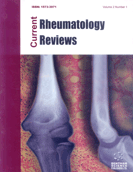Abstract
Central sensitivity syndromes (CSS) share features of similar multiple symptoms, virtually unknown mechanisms and lack of effective treatments. The CSS nomenclature was chosen over alternatives because it focused on a putative physiological mechanism of central sensitization common to disorders such as fibromyalgia, irritable bowel syndrome, vulvodynia and temporomandibular disorder. Increasing evidence from multiple biological systems suggests a further development. In this new model central sensitization is part of a ensemble that includes also the symptoms of widespread pain, fatigue, unrefreshing sleep and dyscognition. The main feature is an intrinsic program that produces this ensemble to guide behavior to restore normal function in conditions that threaten survival. The well known “illness response” is a classic example that is triggered in response to the specific threat of viral infection. The major leap for this model in the context of CSS is that the symptom complex is not a reactive result of pathology, but a purposeful feeling state enlisted to combat pathology. Once triggered, this state is produced by potential mechanisms that likely include contributions of the peripheral and central immune systems, as well as stress response systems such as the autonomic system and the hypothalamic–pituitary–adrenal (HPA) axis. These act in concert to alter behavior in a beneficial direction. This concept explains similar symptoms for many triggering conditions, the poorly understood pathology, and the resistance to treatment.
Keywords: Autonomic, central sensitivity syndromes, fibromyalgia, functional somatic disorders, hypothalamic–pituitary– adrenal axis, illness response, immune, protective homeostasis, purposeful feeling state, stress.








